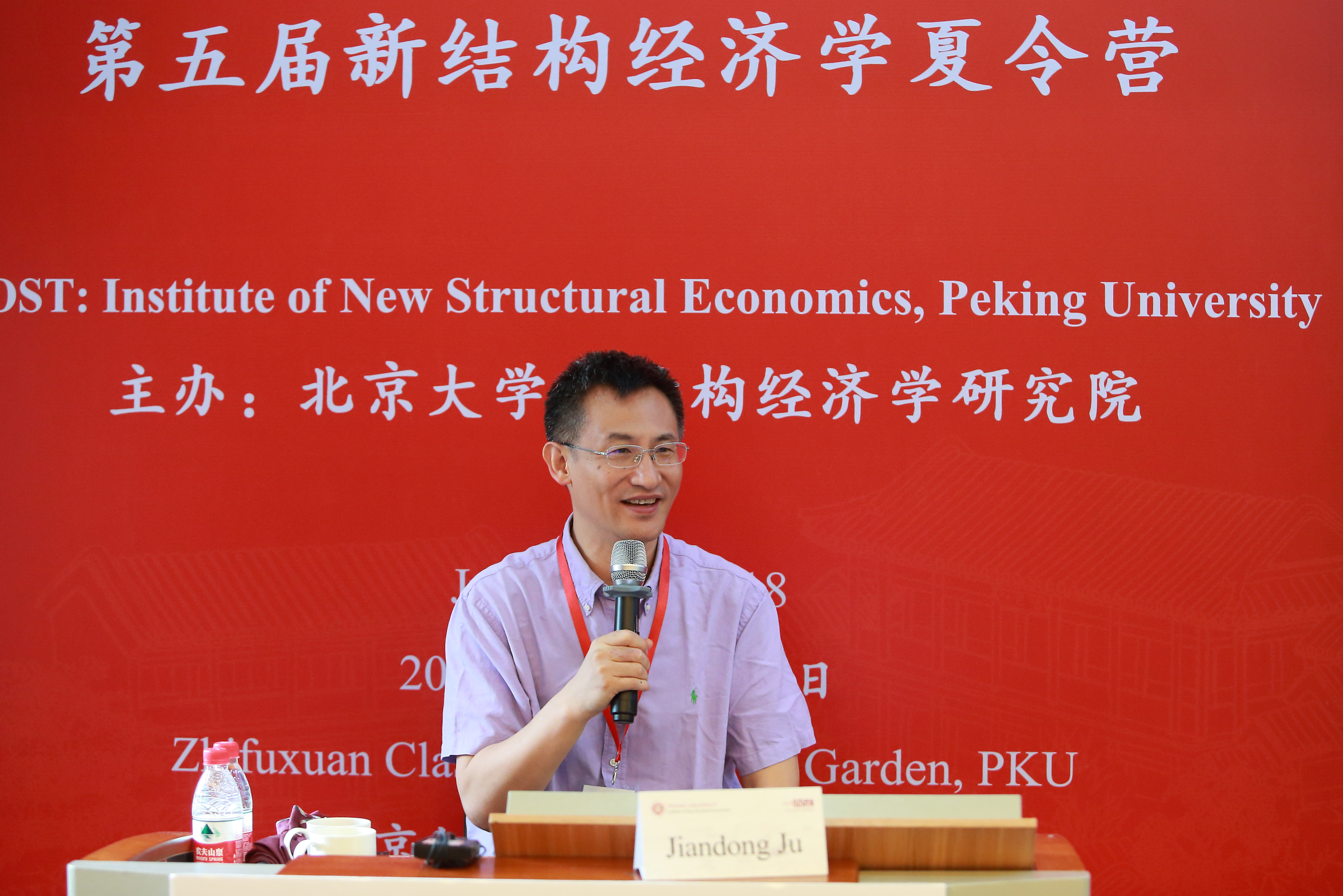Students﹀
【Fifth】Jiandong Ju: Dynamic Structure Analysis and Industry Dynamics
2018-07-20
Content introduction:

Speaker:Jiandong Ju
Topic:Dynamic Structure Analysis and Industry Dynamics
Professor Jiandong Ju’s introduces the method of dynamic structural analysis, which provides a framework to jointly study macro dynamics and structural change. The start point is that along with dynamic growth, we can always see structural change. That is to say, we need to analyze two dimensions of economic change: time dimension along which we discuss aggregate changes, and micro dimension of structural change, particularly endowment structure.
Professor Jiandong Ju firstly introduces the four ways to define of economic structure. sThe most commonly used way is endowment structure. We can label industries from most labor intensive to most capital intensive, according to their labor-capital ratios. The second way is according to the technique used for production. Low technical industry represents the industry with small skilled labor share of total employment, while high technical industry represents the one with large skilled labor share. The third one is Ricardian comparative advantage in terms of relative TFP or unit cost. The last one is dependence of institutions, including financial institution, labor market institution, as well as policies such as industrial policy and environmental policy.
Professor Jiandong Ju then introduces heterogeneous firms and market structure within each sector. In one industry, each firm has its own productivity. Each industry in the economy has dispersed firms in productivity and size. The sectorial output, which is the composite of final good, can be further decomposed into firms’ outputs. In this way, economic growth at the macro level can be degraded into firm dynamics at the micro level through the economic structure.
At the last part of the lecture, Professor Ju extends this framework into open economy and introduces one study of China’s structural change and WTO accession. The research is motivated by three evidences: 1) Chinese manufacturing production shifts toward capital intensive industries after WTO; 2) export participation increases for labor intensive industries but decreases for capital intensive industries; 3) Chinese productivity growth is biased toward labor intensive industries. However, according to Ricardian and Heckscher-Ohlin framework, domestic production and export should both be more capital intensive along with capital accumulation. This paper provides a unifying trade framework incorporating endowment structure, firm heterogeneity and trade cost to explain this puzzle. The quantitative simulation and counter-factual analysis indicates capital deepening favors capital intensive industries while sector bias technology change and trade liberalization favor labor intensive industries.


Written by: Siyu Chen
Proofread by: Zhengwen Liu

